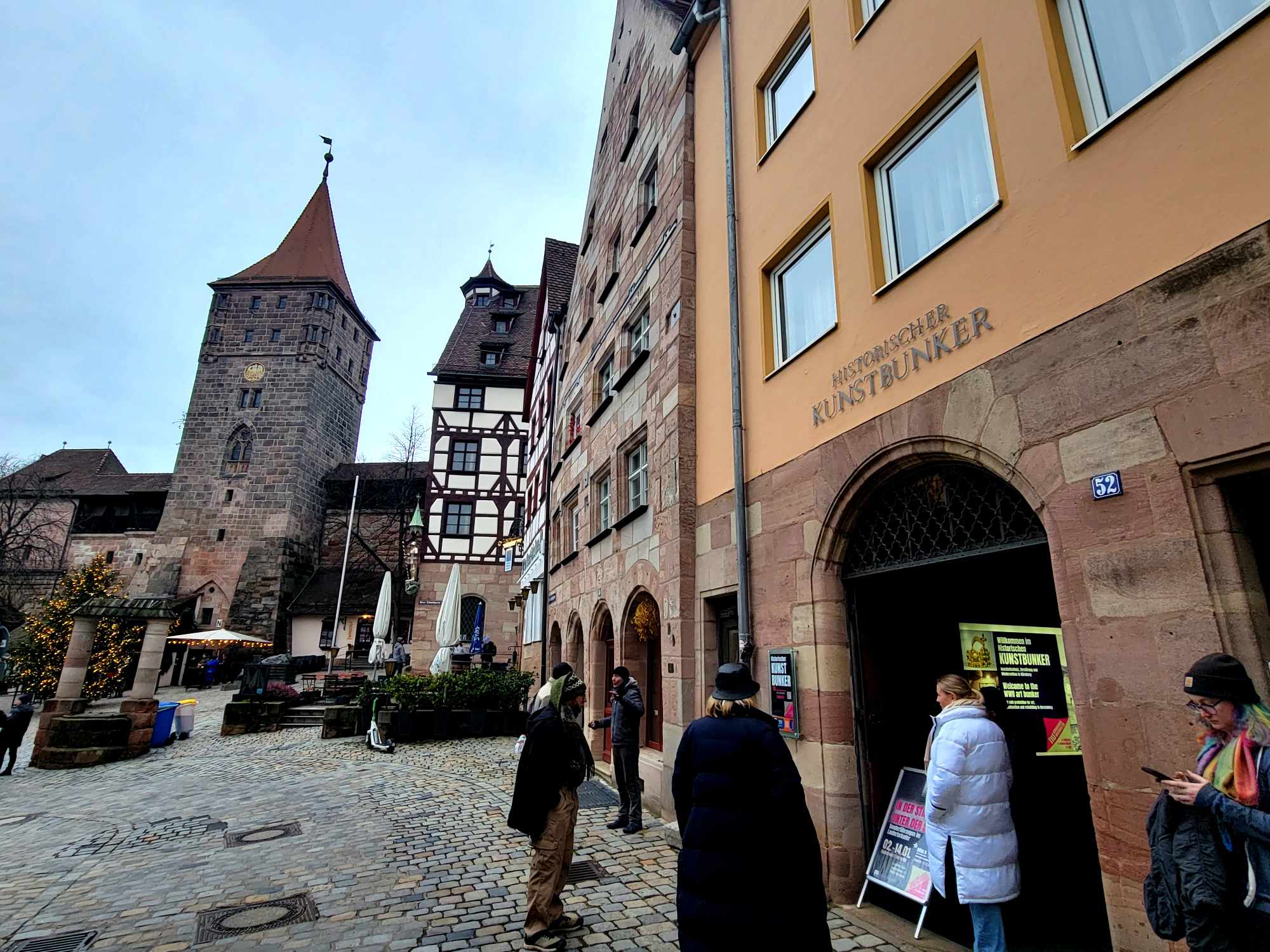As a die-hard art nerd and history lover, the anticipation of taking a tour of the Nuremberg Art Bunker almost killed me! On my first trip to Nuremberg I didn’t buy tickets in advance. Huge mistake. I stood watching while everyone in front of me got in, and I was the first one after the cut-off. Lesson learned the hard way. That very moment I vowed to return, and I did. The infamous and fascinating art bunker topped my list of things to do on that second trip. And yes, I made sure I had tickets in hand well ahead of time! You can learn from my mistake and get your tickets and guided tour in advance HERE!
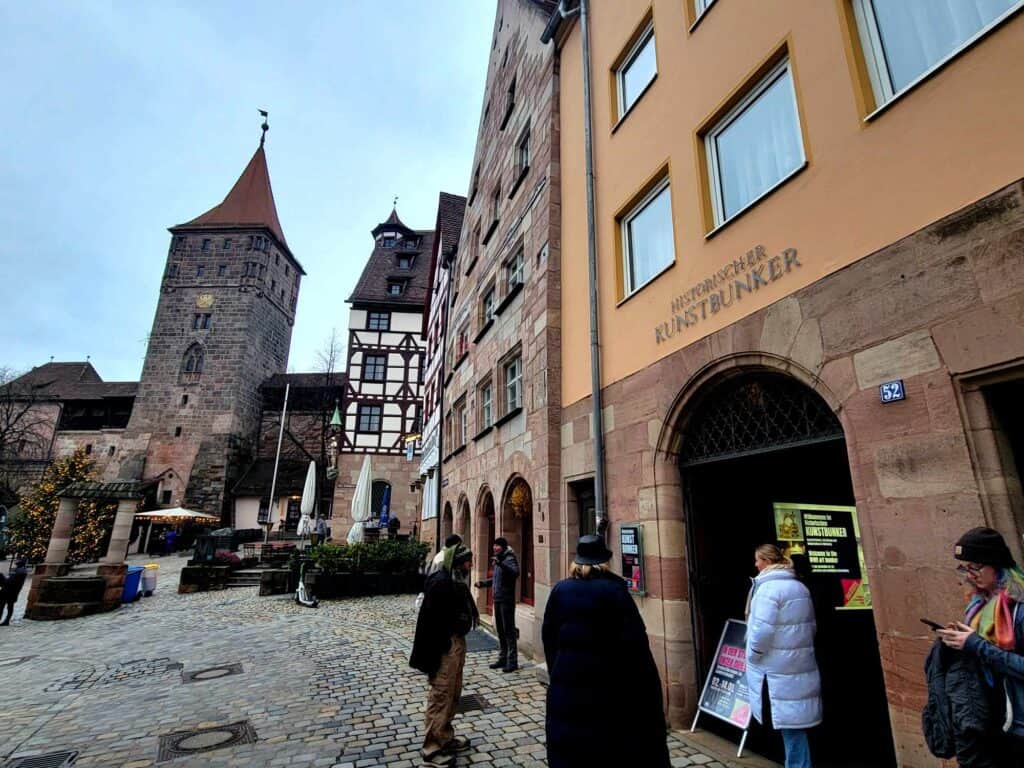
The Art Bunker’s Medieval History
The Nuremberg art bunker began as a Medieval beer cellar, dug from the road into a hillside underneath Nuremberg castle. Nuremberg beer cellars boomed in the Middle Ages, filling the underground landscape of the city. These cellars provided naturally cool temperatures and a practical location for brewing and storing beer before the advent of modern refrigeration. Back then, beer was a staple beverage. Nuremberg, with its thriving economy and bustling trade routes, became a hub for brewing and beer culture.
World War II Bomb Shelters
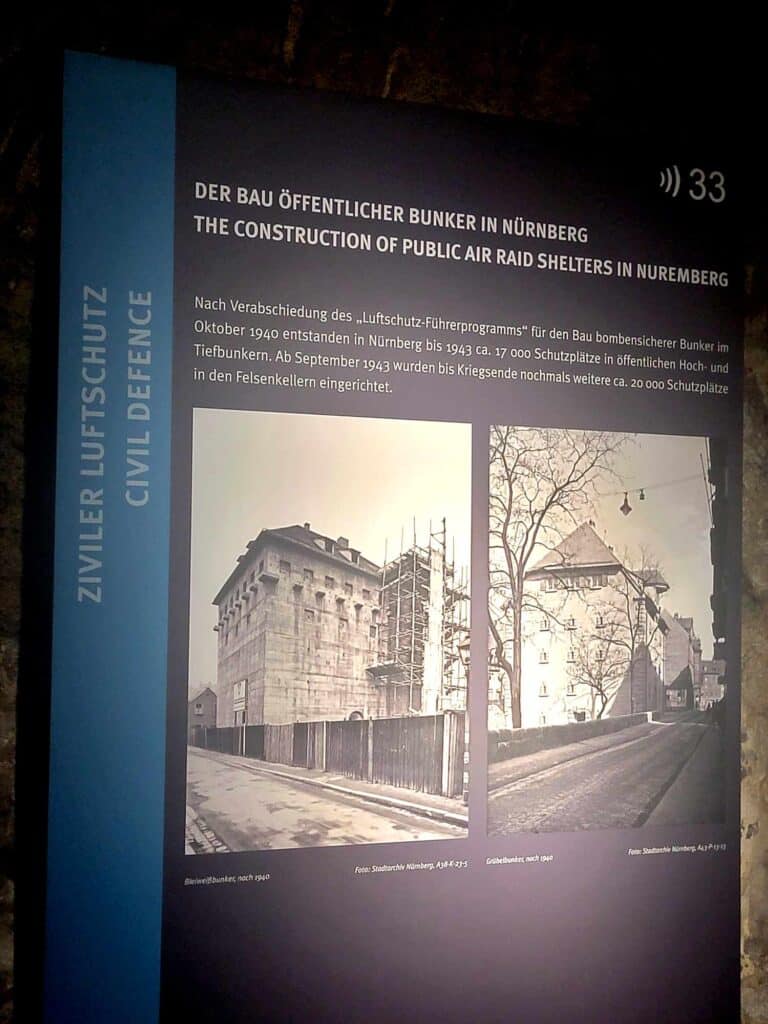
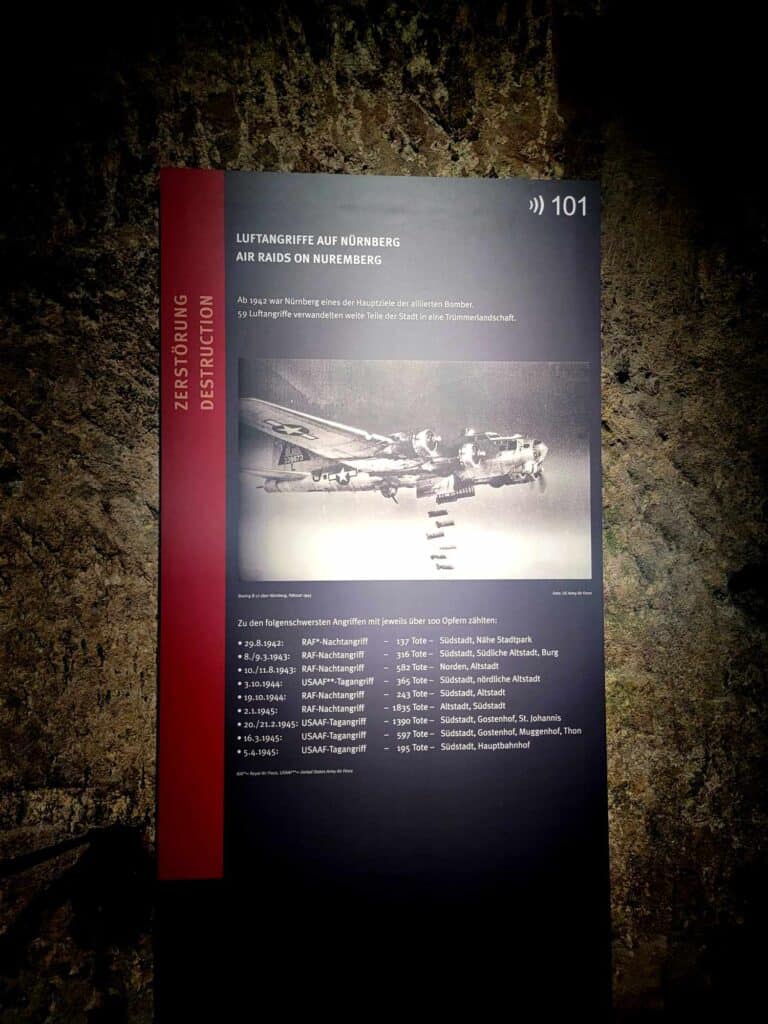
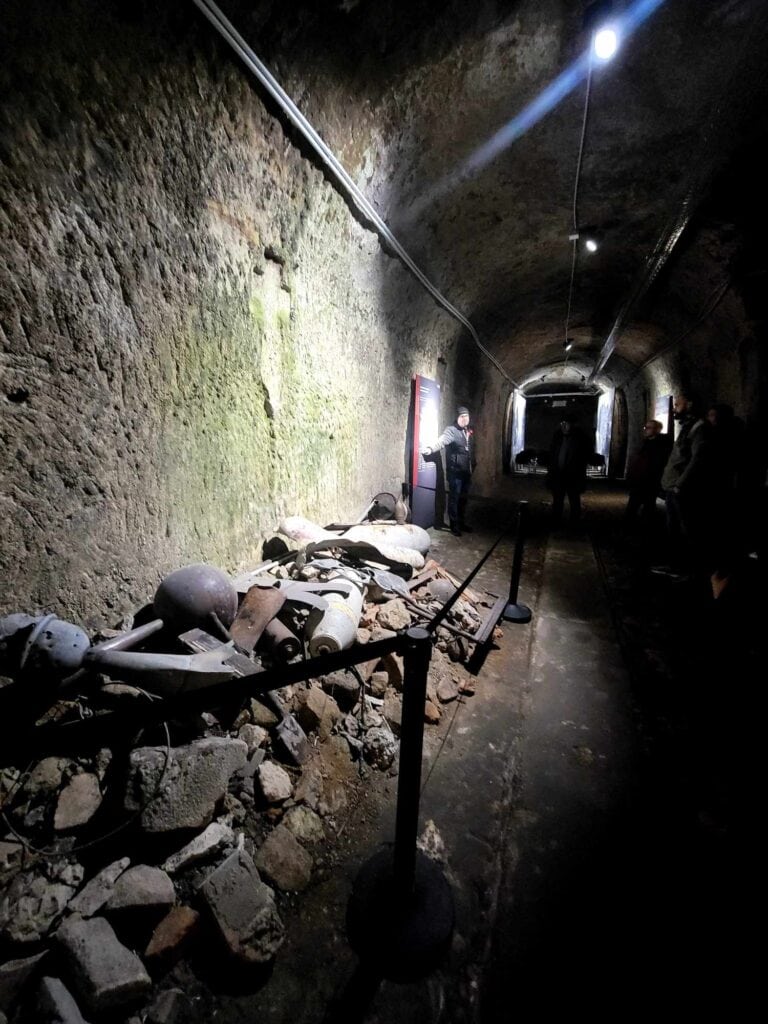
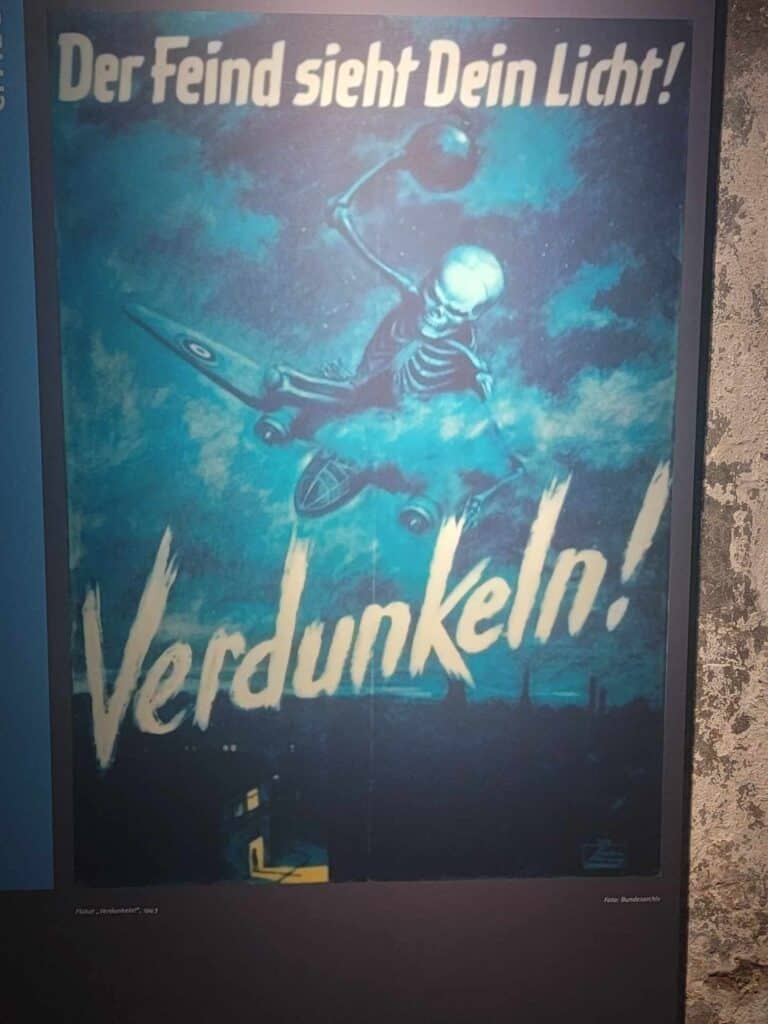
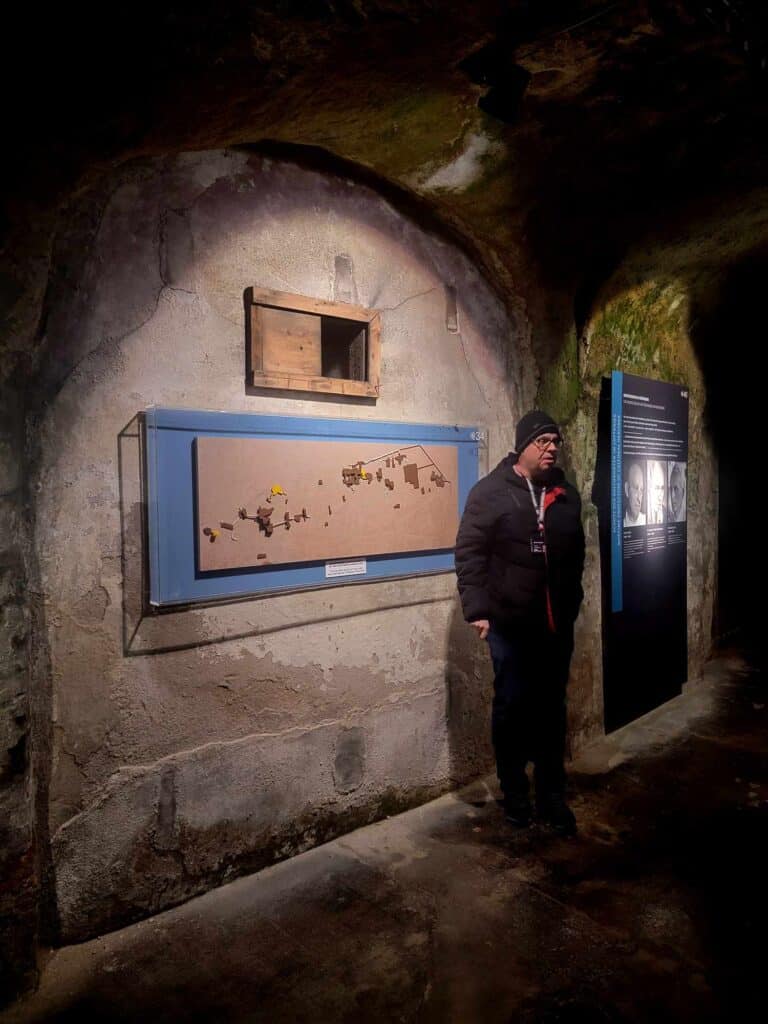
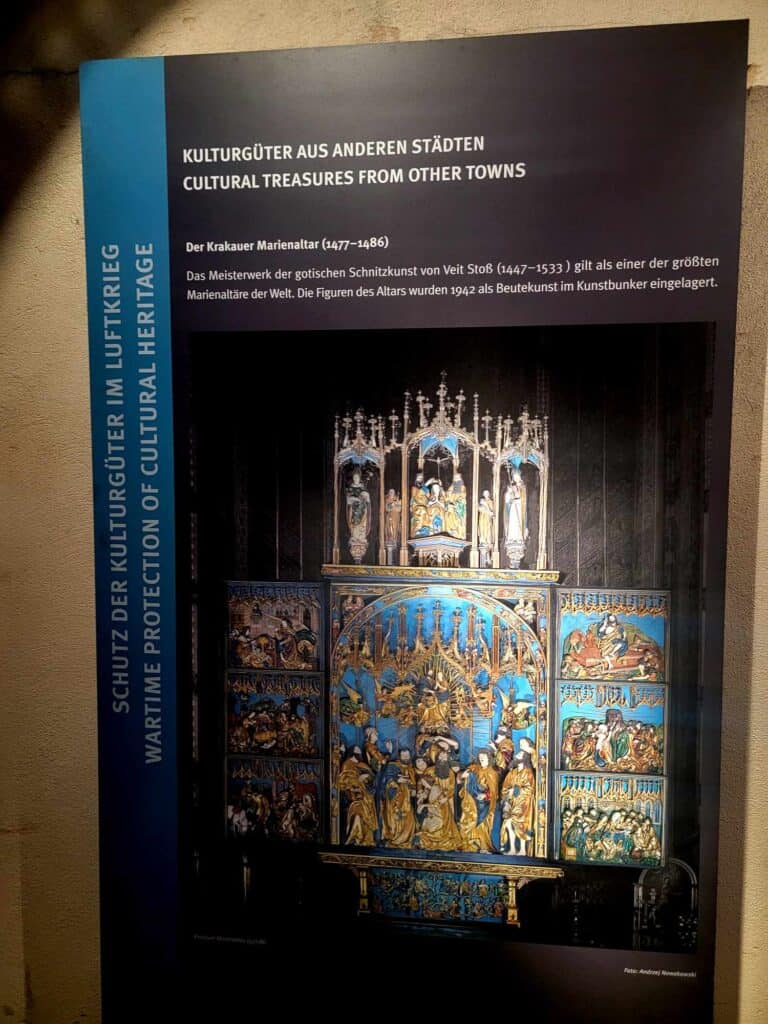
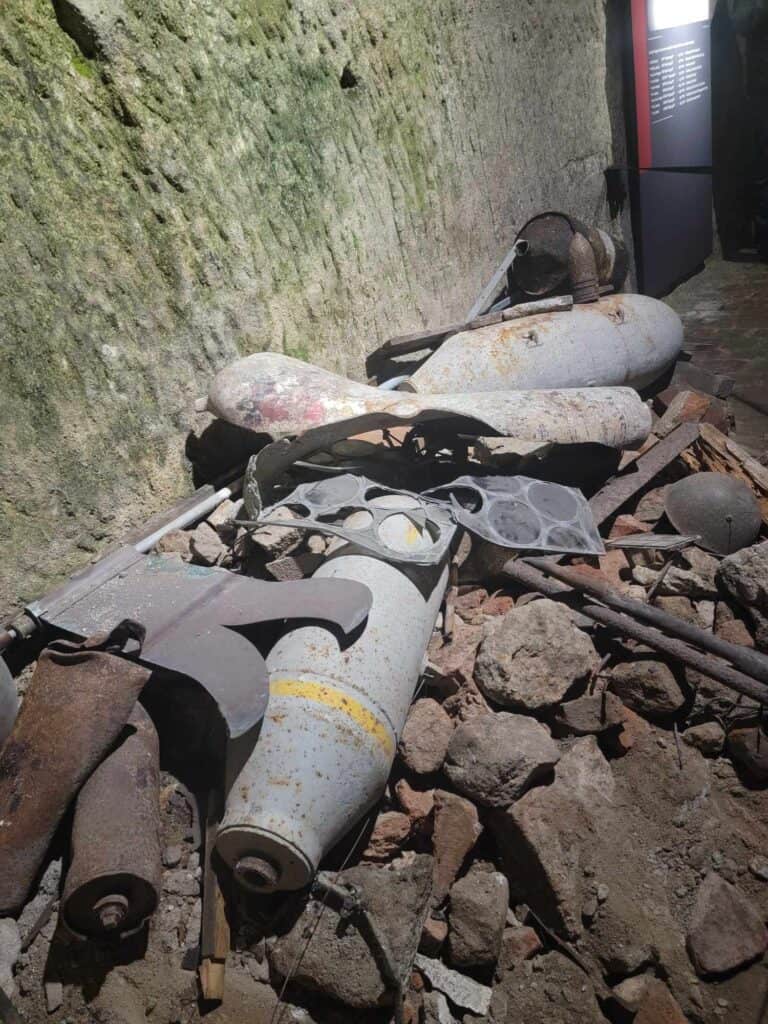
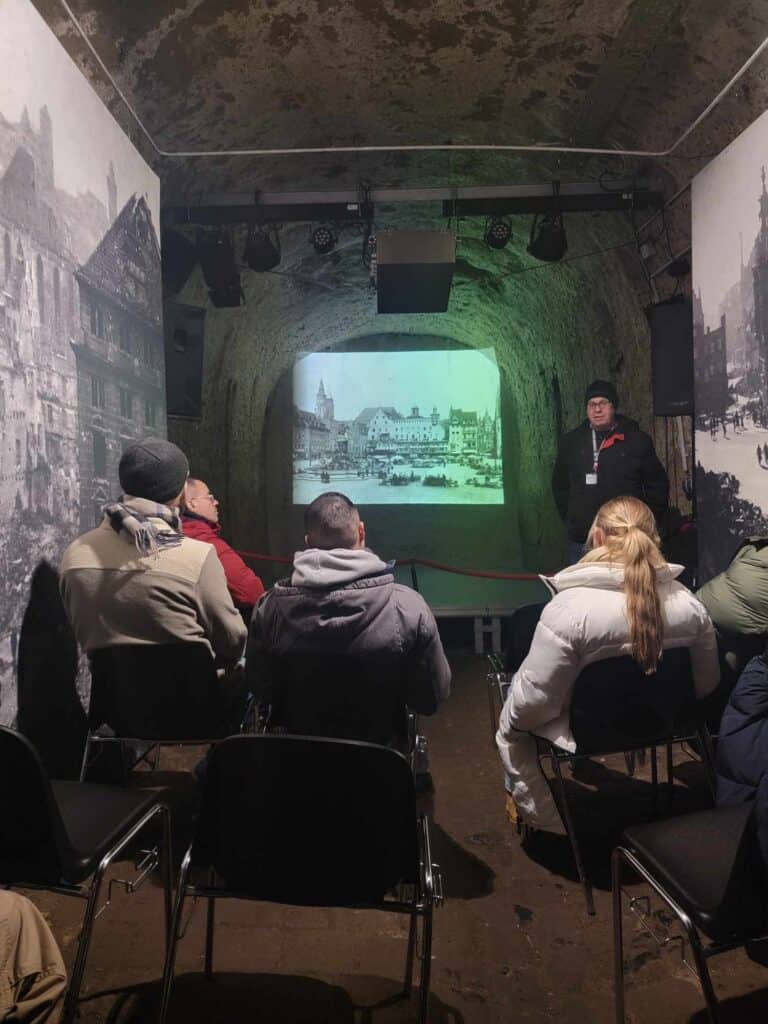
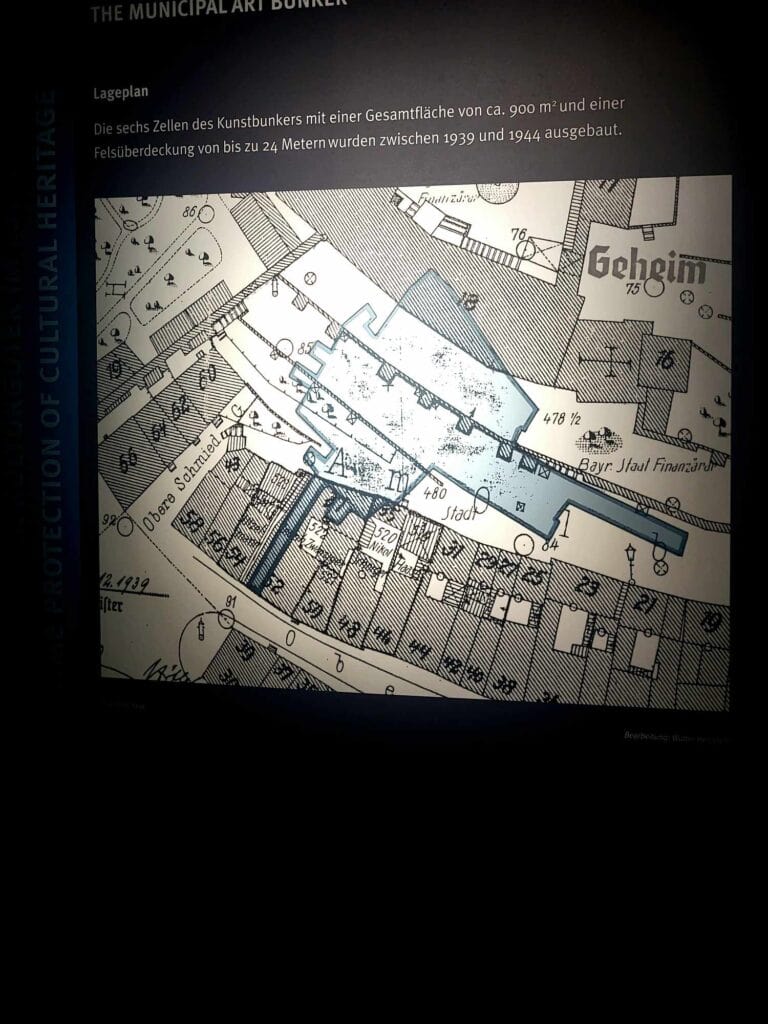
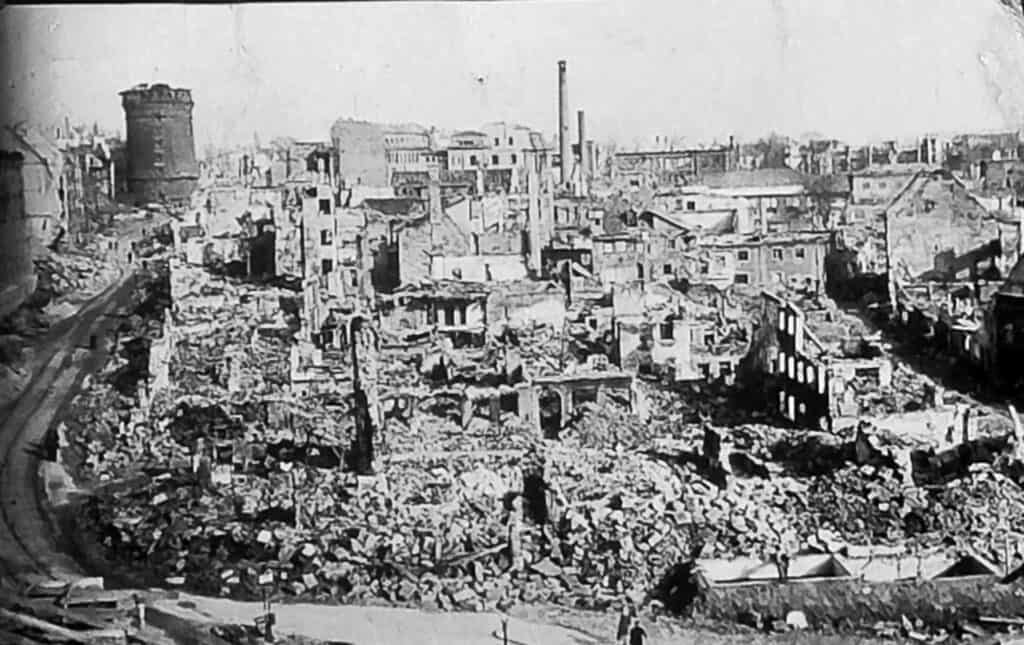
During World War II, the extensive series of beer caves beneath Nuremberg served another purpose. They acted as air raid shelters during the intensive Allied bombing campaign at the end of the war. Nuremberg, a major stronghold of the Nazi party, and the location of many Nazi rallies, sat squarely in the crosshairs of the Allied air forces. Other than Dresden, Nuremberg suffered the most bomb damage of any German city, with 90% of the buildings reduced to rubble. You can click HERE to get a guided 2-hour tour of the Nazi rally grounds which is well worth a visit too.
A Secret Hiding Place for Stolen Art
During the war, it wasn’t just people hiding underground – there was also art, and lots of it. Under Hitler’s direction, the Nazis confiscated artworks and cultural property by the hundreds of thousands from across Europe. The systematic looting of art from Jewish collectors, dealers, and institutions was part of their broader campaign to steal cultural property and wealth from groups targeted for extermination. They also stole artworks from museums, churches, public places, and private collectors as Hitler’s forces rolled across Europe.
Tragically, many pieces of modern and avant-garde art, which the Nazis deemed ‘degenerate’ were destroyed. This included irreplaceable works by Picasso, Kandinsky, Chagall, and many others. The stolen art that survived ended up in various repositories, including salt mines and secret storage facilities like the Nuremberg art bunker. The art bunker also housed artworks from the city of Nuremberg in an effort to keep them safe from the Allied bombing.
An Ideal Location
The art bunker used to house the Nazi hoard had an entrance right at street level. This meant that the art could be wheeled in easily since there were no stairs. The cave also tunneled into a hillside, protected under 24 meters of stone. However, this configuration also resulted in tunnels more vulnerable to explosions outside which could travel horizontally through street-level tunnels. The installation of a massive set of iron doors solved that problem. You can see those original doors when you take the tour!
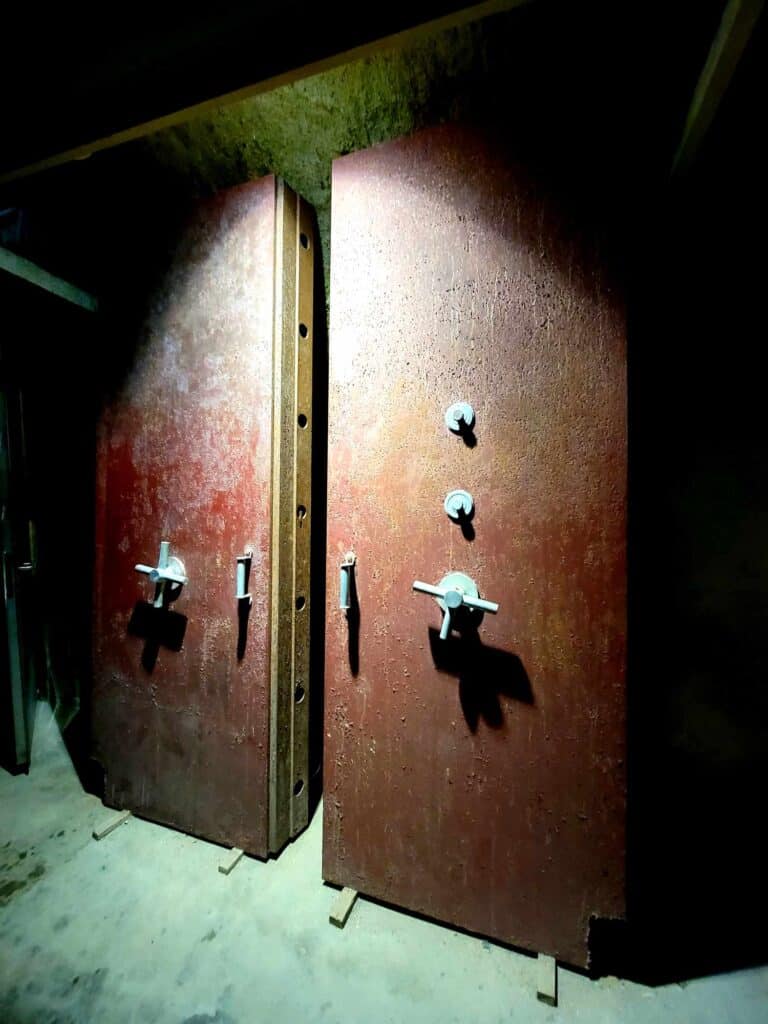
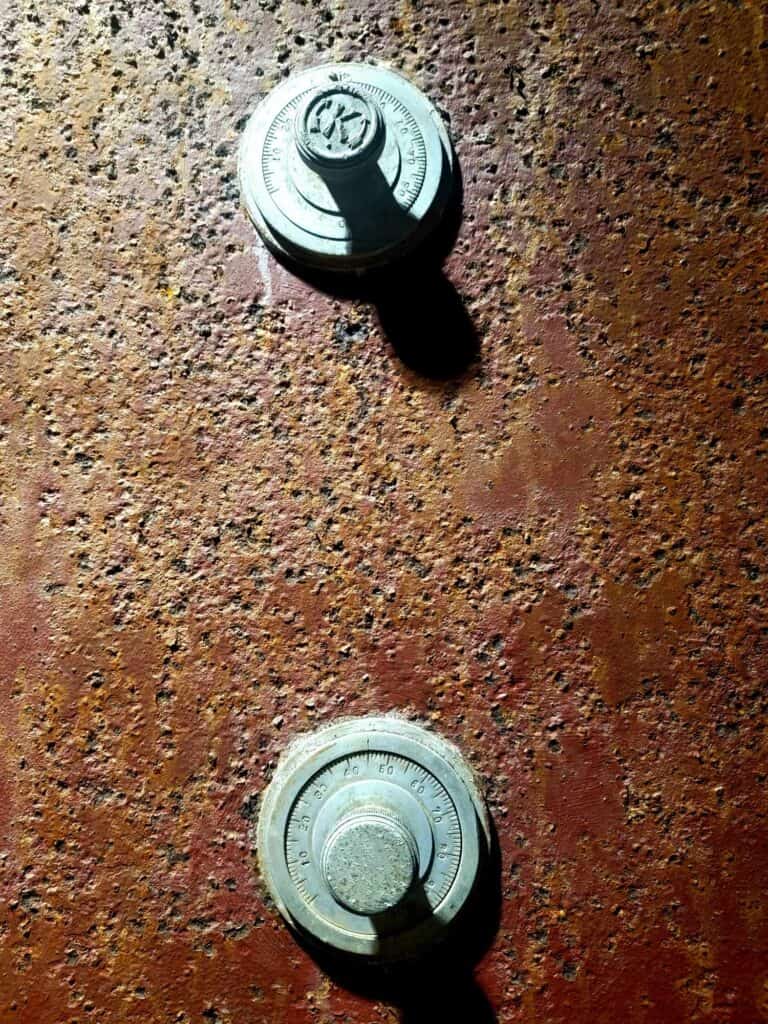
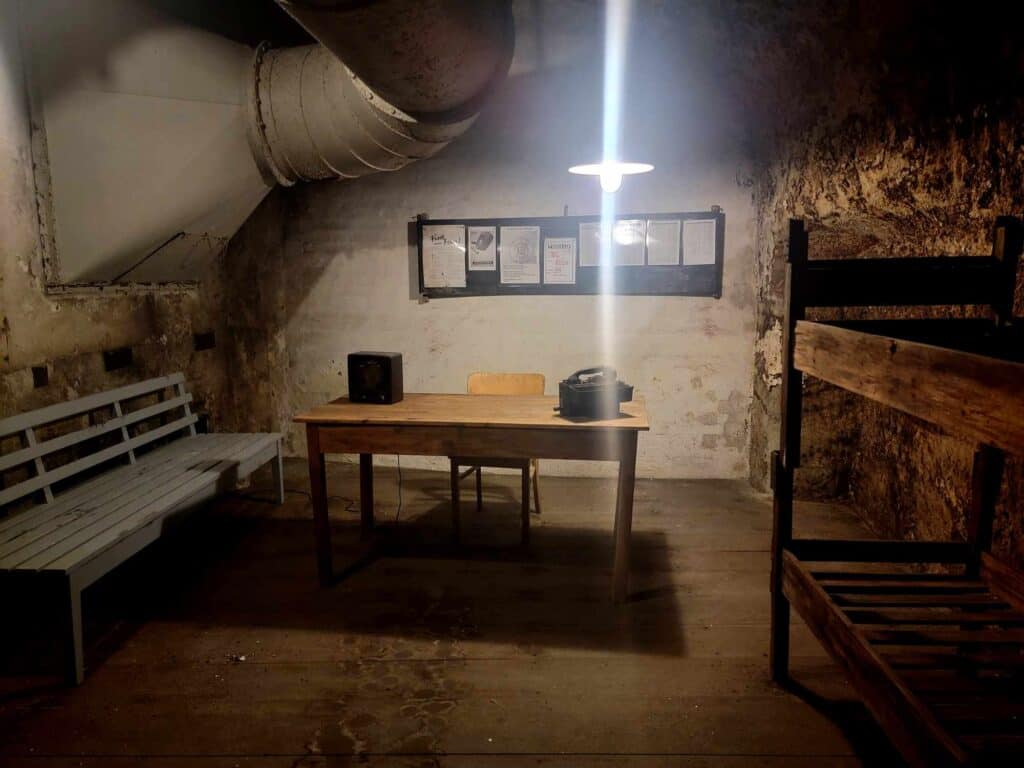
Nuremberg’s near total annihilation makes it even more remarkable that today you can walk through St. Sebaldus church in the Old Town and gaze at its original stained glass from the 14th century. Master Renaissance artist Albrecht Dürer designed some of this irreplaceable glass, kept safe in the secret art bunker. Many other spectacular artworks, indoors and outdoors, managed to survive. The ones that couldn’t be moved, like the stunning 15th century sacrament house within St. Lorenz church were successfully crated and packed with sand, in place.
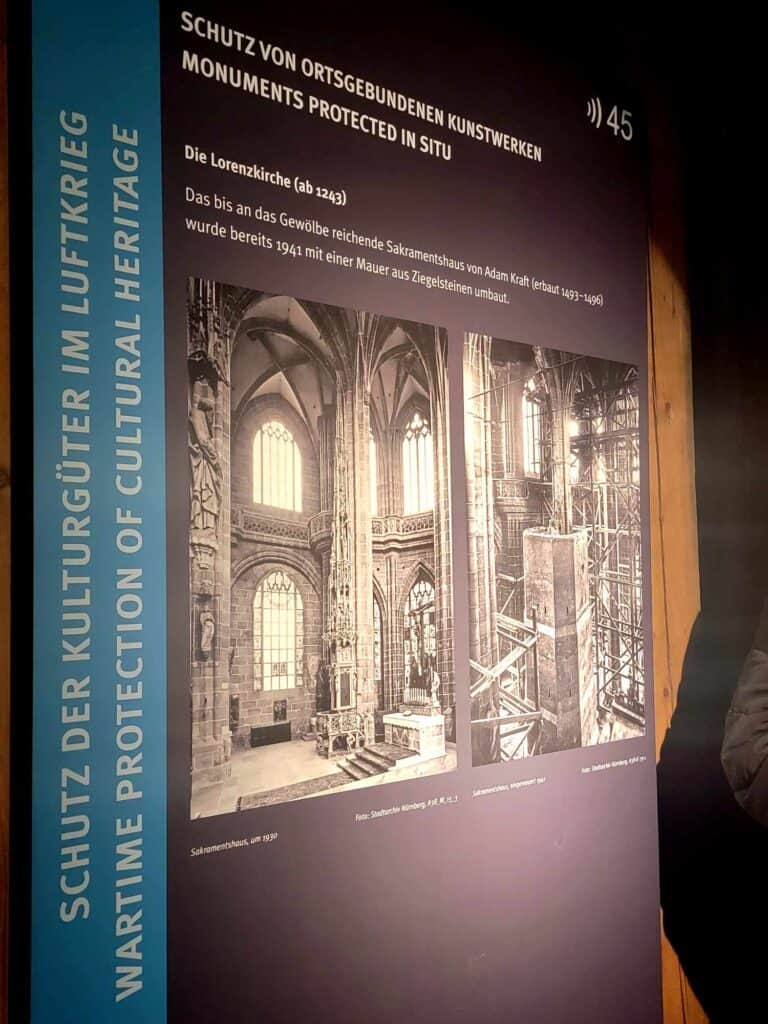
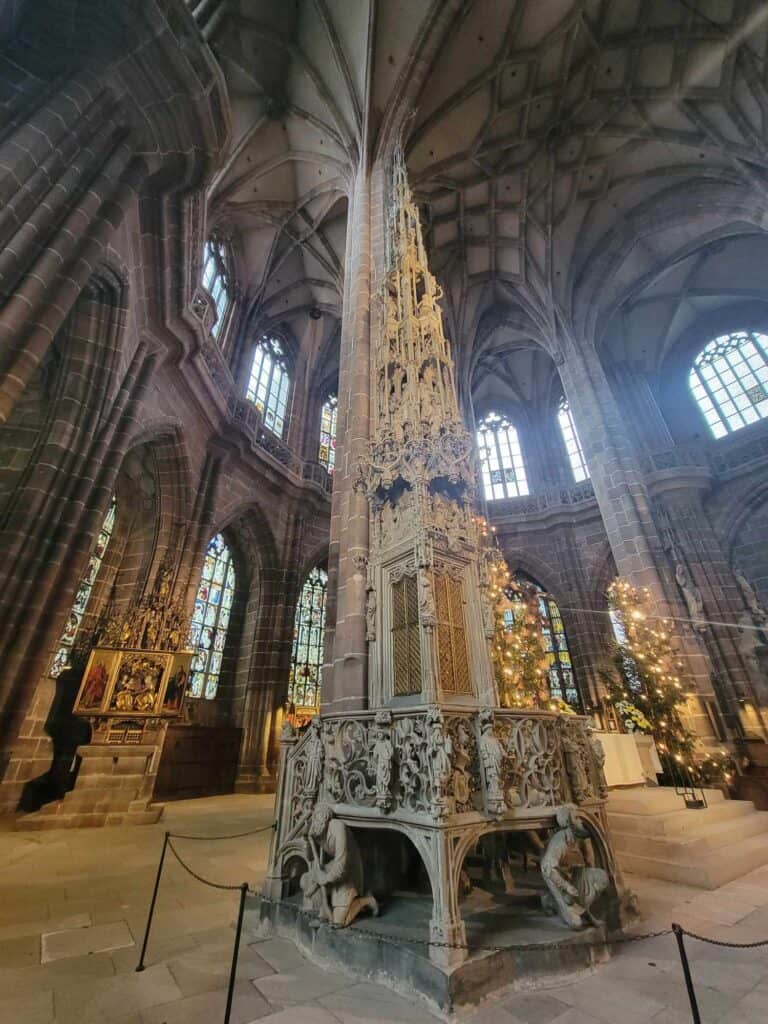
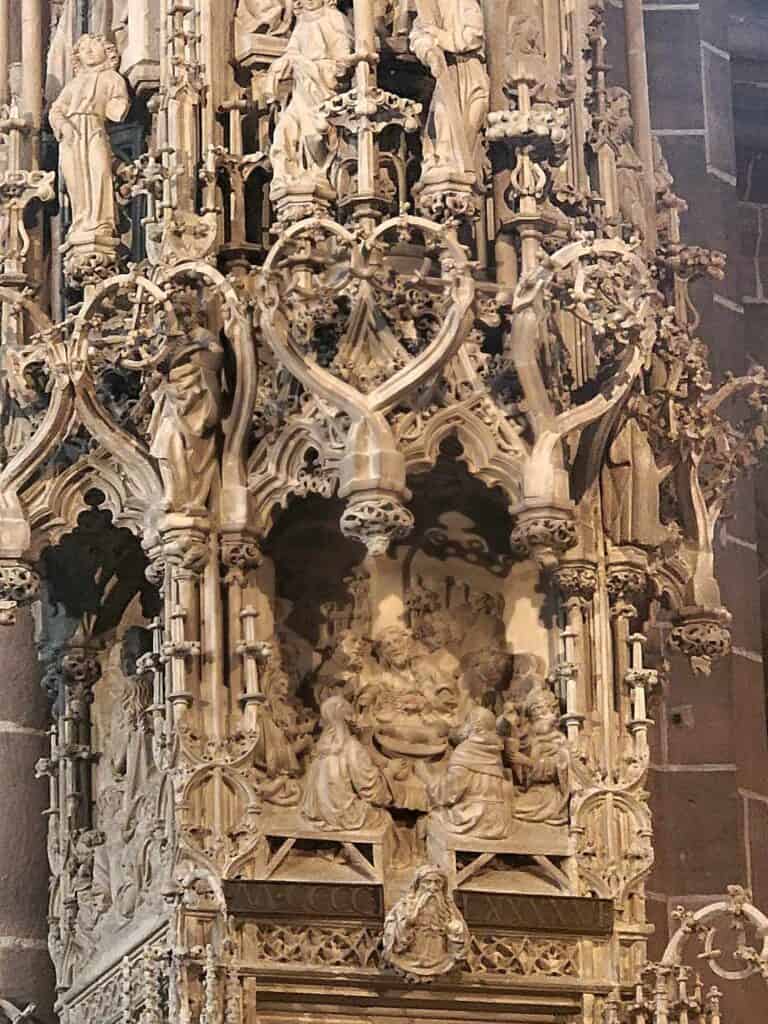
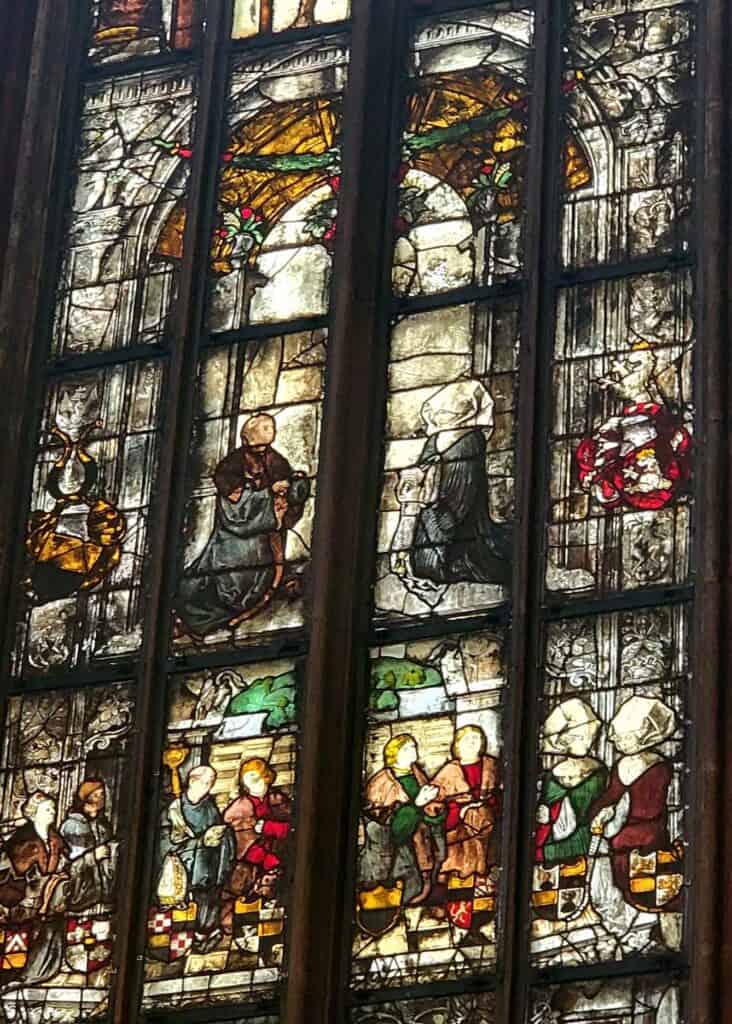
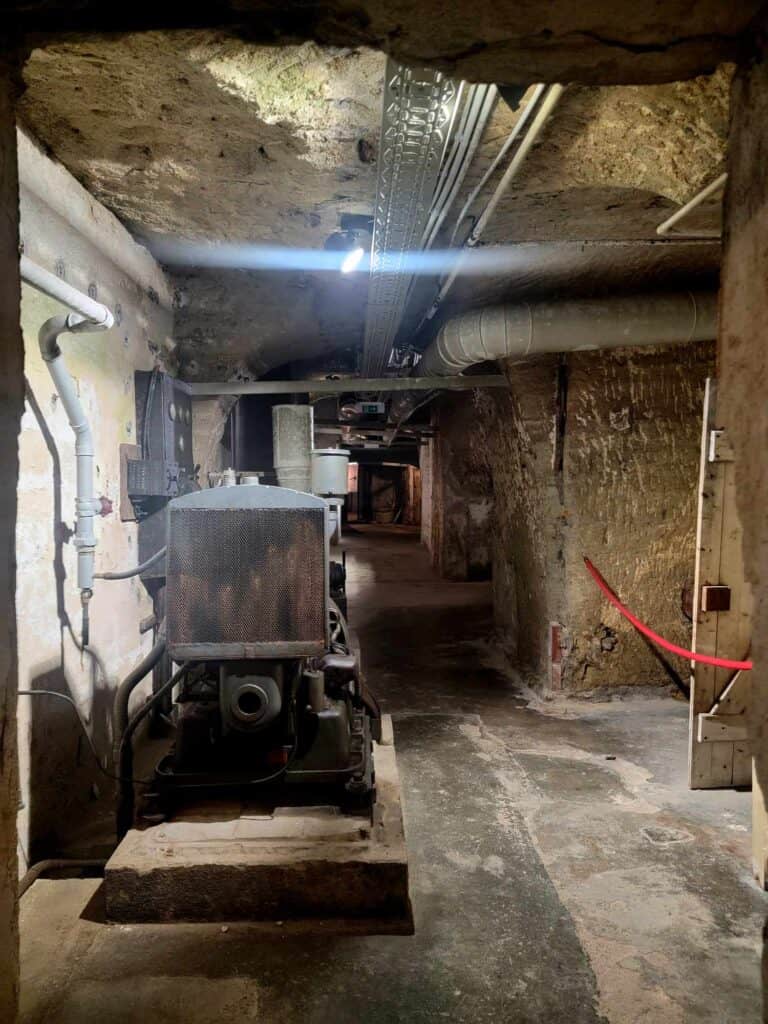
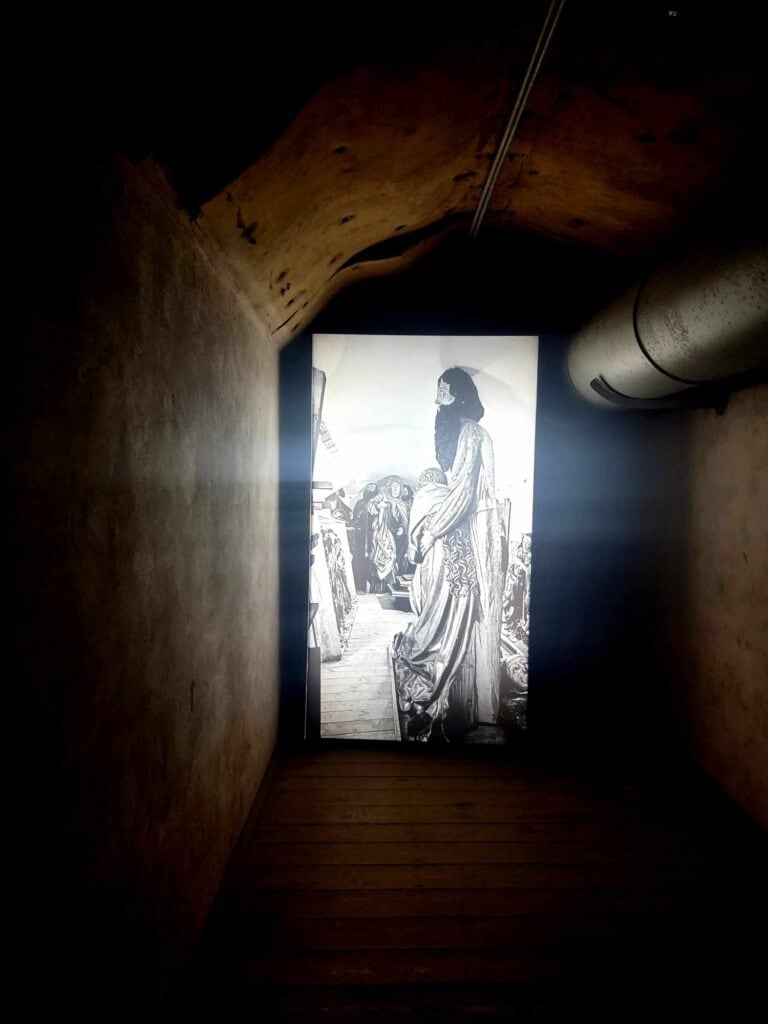
The Imperial Regalia of the Holy Roman Empire
Perhaps the most famous of all the treasures located in the clandestine repository were the six pieces of the Imperial Regalia of the Holy Roman Empire – the cross, the holy lance, the crown, the scepter, the orb, and the sword. The Nazis took these precious historic items from Austria and stored them in the bunker for future use as symbols of their power. Fortunately Hitler’s power plan didn’t pan out. After interrogation, someone finally gave up the location, and the Americans discovered the objects in the bunker, behind a masonry wall. The treasures were ultimately returned to Vienna, but the vault can still be seen in the Nuremberg art bunker.
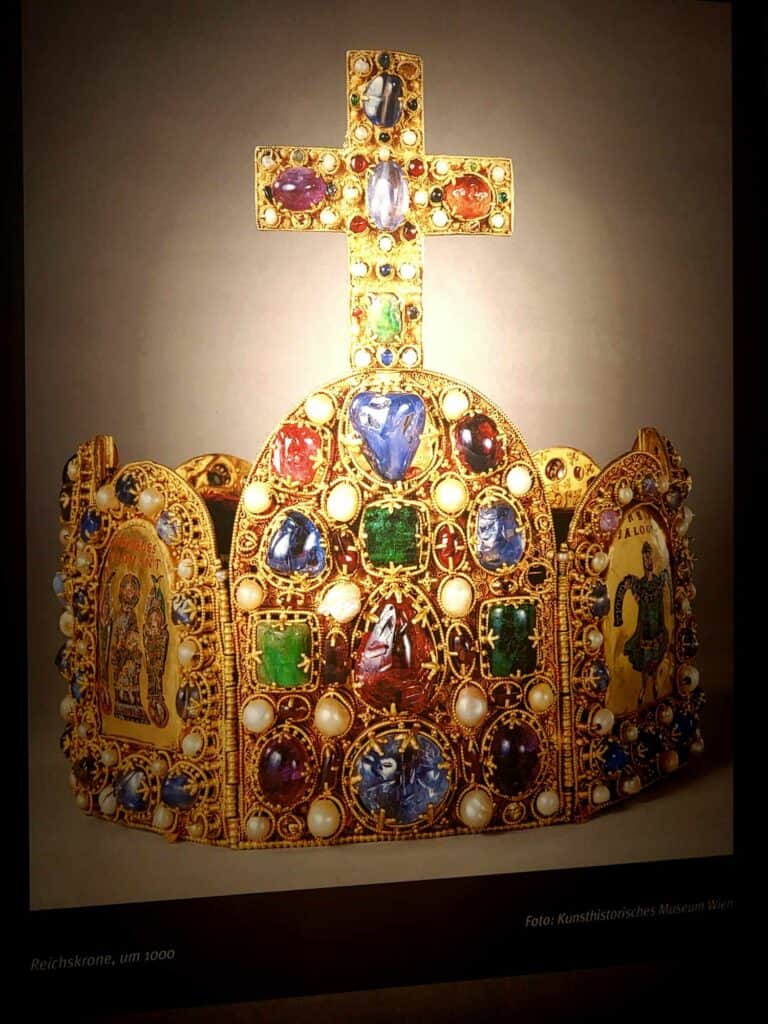
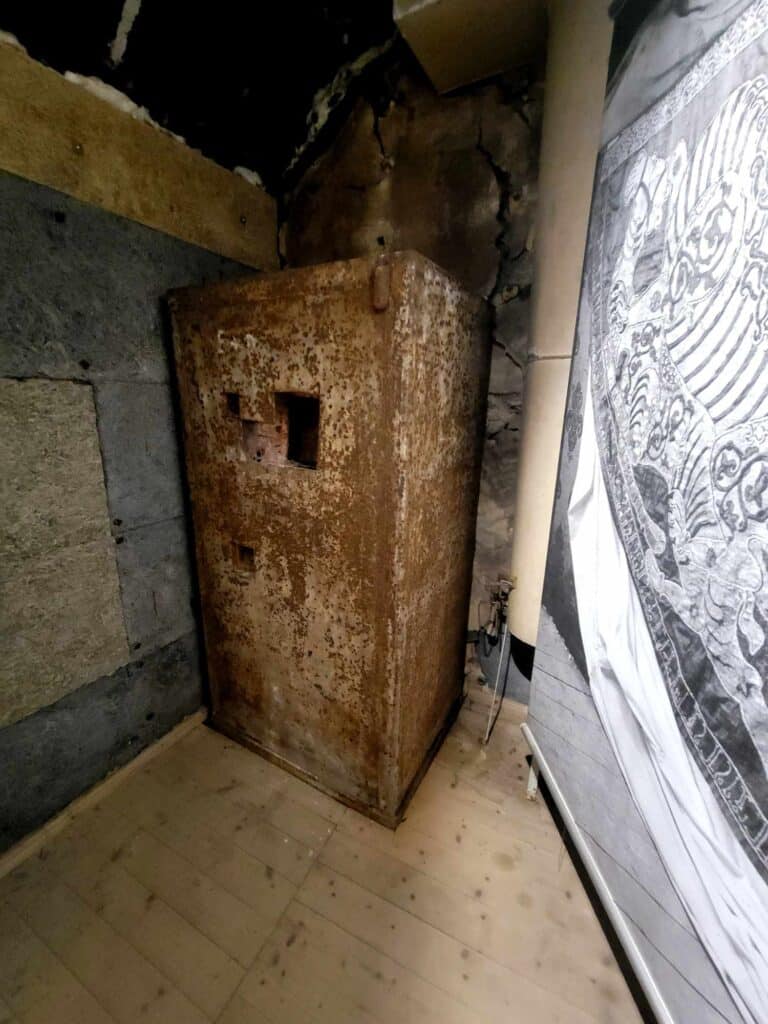
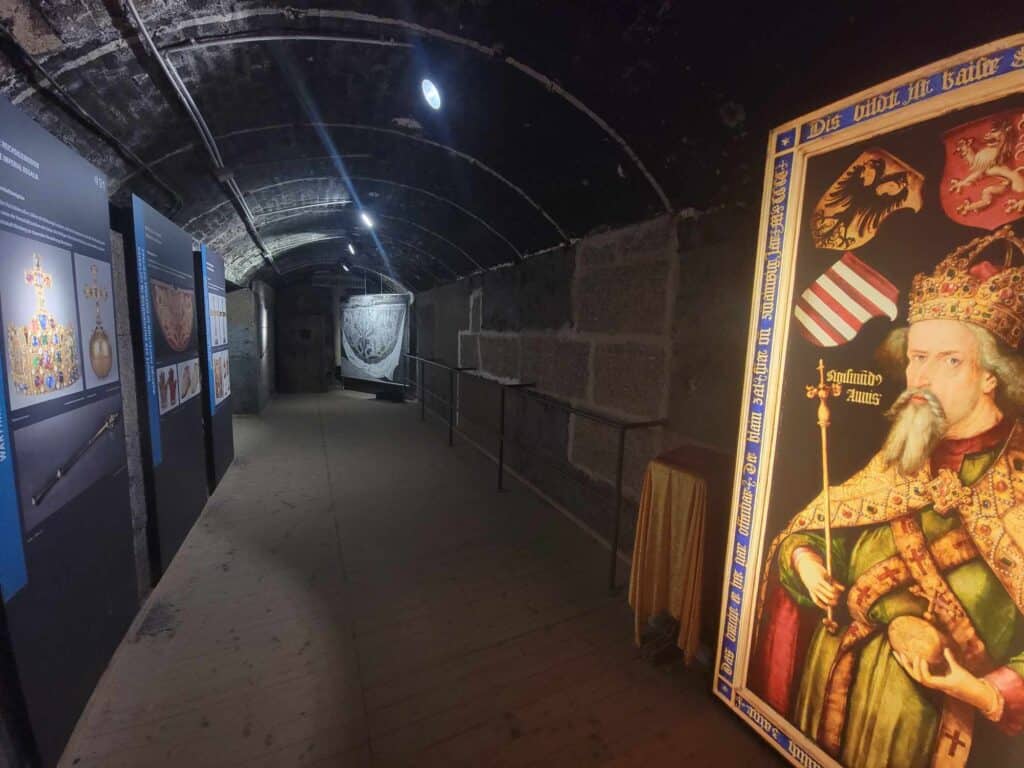
The Nuremberg Art Bunker is a Must-Do for History Buffs & Art Lovers!
Wandering through the passages of the bunker, thinking of its evolution from a humble beer cellar to a secret vault which concealed the actual regalia of the Holy Roman Empire staggered the imagination. It was impossible not to feel grateful that so much was saved, but also angry at the evil forces which caused so much destruction in the first place. The tragic casualties of war both in human life, and in the fruits human endeavor are incalculable.
When you find yourself in Nuremberg, do make it a point to get tickets ahead of time and enjoy the absolutely fascinating history of this place. It’s location right next to the castle makes it convenient to tack on after a morning spent exploring the castle and museum.
What you need to know:
- The tour takes about one hour
- Maximum group size: 20 persons
- Group bookings can be made by arrangement (German, English, max. 20 persons)
- There are also audioguides in English, French, Spanish, and Italian for those on the tour who don’t speak the language of the guide
- Meeting point: Historic Art Bunker, Obere Schmiedgasse 52
Other Things to Do in Nuremberg
You could easily spend 3-4 days in Nuremberg really getting to know this amazing place and all it has to offer. First, absolutely do not miss the castle! You can find everything you need to know about visiting here: Your Ultimate Guide to Visiting Nuremberg Castle: History, Tips & Must-Sees!
And for a comprehensive list of all the amazing historical must-dos check out: 25 Best Things to Do in Nuremberg: History and Hidden Gems
These are just a few of the most popular and highly rated tours and activities. Click through and check out the whole list. You’ll be glad you did!
Sponsored content: this section contains affiliate links
Where to Stay
If you’re looking for a fabulous place to stay in Nuremberg, we highly recommend the Hotel Elch which is an easy walking distance to the Nuremberg Art Bunker, the Castle, St. Sebaldus, and St. Lorenz churches, among other landmarks. Our review of this historical and dog-friendly hotel right in the old town is HERE.
